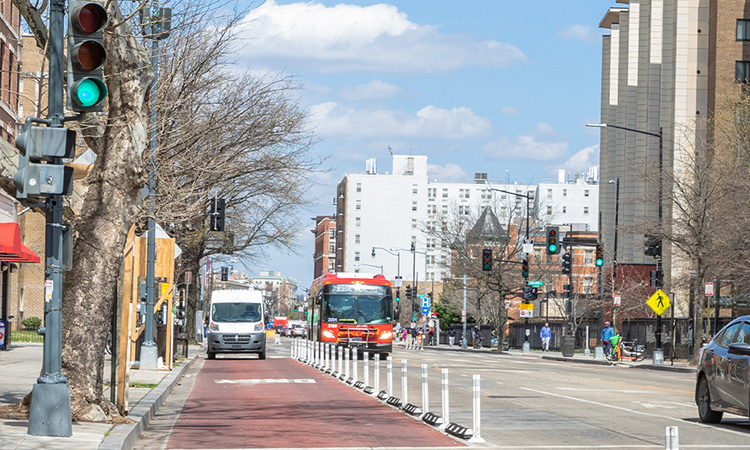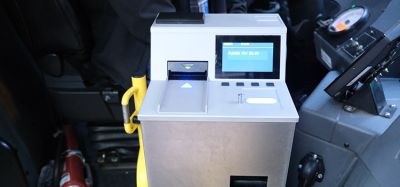WMATA to use automated cameras for bus lane enforcement in District of Columbia
- Like
- Digg
- Del
- Tumblr
- VKontakte
- Buffer
- Love This
- Odnoklassniki
- Meneame
- Blogger
- Amazon
- Yahoo Mail
- Gmail
- AOL
- Newsvine
- HackerNews
- Evernote
- MySpace
- Mail.ru
- Viadeo
- Line
- Comments
- Yummly
- SMS
- Viber
- Telegram
- Subscribe
- Skype
- Facebook Messenger
- Kakao
- LiveJournal
- Yammer
- Edgar
- Fintel
- Mix
- Instapaper
- Copy Link
Posted: 19 April 2023 | Intelligent Transport | No comments yet
WMATA buses in the District of Columbia will soon use automated cameras to enforce bus-only lanes and bus stop zones, improving service for two-thirds of Metrobus customers and supporting sustainability in transit.


Credit: Washington Metropolitan Area Transit Authority
The Washington Metropolitan Area Transit Authority (WMATA/ Metro) has announced that it will add automated cameras to buses to keep unauthorised vehicles out of bus-only lanes and bus stop zones under an agreement with the District of Columbia.
The new initiative, called Clear Lanes, is modelled after similar programmes, including San Francisco and New York City, and will be the first to use automated camera technology to enforce bus stop zones in addition to bus-only lanes.
Clear Lanes aligns with WMATA’s Better Bus initiative to create better, more reliable service for bus customers. In the District, 140 buses on 31 routes that run along bus-only lanes will be equipped with cameras. Encrypted video and photos from the automated cameras will be sent via cellular directly to the District, which will handle the review, issue citations and collect fines. WMATA will not review or have access to the encrypted video footage.
The programme is expected to improve service for about two out of every three Metrobus customers in the District, the majority of whom do not own a car.
“For people to use buses, we need them to be faster and more reliable. That can’t happen if cars are blocking the bus lanes that are supposed to keep buses moving,” said Metro General Manager and Chief Executive Officer Randy Clarke. “Bus stop zones are equally important to keep clear, so that buses can pull up to the curb so customers of all abilities have a safe way to board or exit.”
WMATA’s $4.8 billion budget focuses on improving customer experience and equity
Clear Lanes also helps keep buses on time, allowing them to flow freely in bus-only lanes without getting stuck in congestion. Convenient, reliable service makes buses more attractive and takes cars off of the road, supporting sustainability and equity in transit. In the District, nearly half of all customers on Clear Lane routes are low-income and 80% are persons of colour.
“We are investing more than $100 million in our Bus Priority Program, building a network of bus lanes that will create a more equitable, better quality of life for people across the District,” said District Department of Transportation Director Everett Lott. “Over the next six years, our vision is to have 120-lane miles of bus-only lanes that connect our neighbourhoods and bring people to jobs, kids to schools and families together.”
WMATA is in the process of installing the cameras and expects to complete testing sometime in summer 2023, when a warning period would begin followed by citations starting sometime in autumn.
Under the partnership, WMATA will spend $4.6 million to purchase, install and maintain the cameras with the District covering the operating costs, licensing and software in the first two years. The contract provides additional options to expand the programme to 600 cameras over a 10-year period.
The programme has been limited to the District, as WMATA explores the possibility of expanding the programme; however, additional legislation would be required before similar programmes can be implemented in Maryland and Virginia.
If you liked this, you may also be interested in:
▶ TfL reduces carbon emissions with LED bus shelter lighting
▶ FTA awards $239.3 million grant for Twin Cities’ Gold Line BRT expansion
Related topics
Passenger Experience, Public Transport, Sustainable Urban Transport, Transport Governance & Policy
Related modes
Bus & Coach
Related cities
Washington DC
Related countries
United States
Related organisations
District of Columbia, Washington Metropolitan Area Transit Authority (WMATA)
Related people
Everett Lott, Randy Clarke








